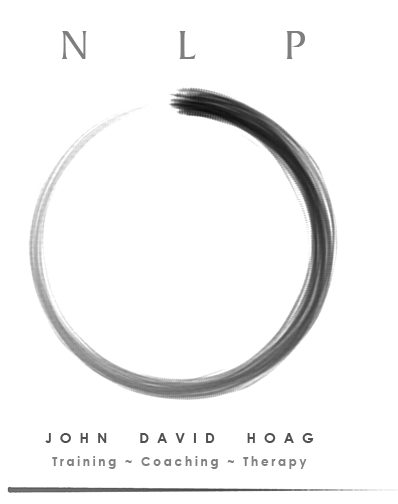A powerful idea or a quote from Pollyanna?
That a behavior has a positive intention
in no way implies that the behavior is
the best way of fulfilling the intention.
A positive intention may be only for oneself
or a part of oneself -- not necessarily for others,
all parts of oneself, or oneself as a whole.
Behaviors include conscious and unconscious
thoughts, emotions, and responses, as well as
symptoms, words and actions which
can be observed externally.
NLP adopts this presupposition from the work and philosophy of the renowned Twentieth Century family therapist, Virginia Satir, who allowed Richard Bandler and John Grinder, the original creators of NLP, to directly observe and model her at work with a number of her most challenging clients.
Of all the NLP presuppositions, this one is perhaps the most frequently misunderstood and initially objected to. So before considering what it means or how it can be used, let's consider what it is not.
As used in NLP, "Behind Every Behavior Is A Positive Intention" is not meant to be understood as a sort of pollyannaism, an irrepressible optimism and tendency to find good in everything, an overly and often blindly optimistic or irritatingly cheerful state of mind or point of view. Nor is it an excuse to absolve a person of responsibility for hurtful or misguided behaviors. It says nothing about whom the intention is for, and it says nothing about the quality or effectiveness of the behavior.
Is It True?
Since NLP does not assert itself to be anything more than a model, or map, and does not make any claims to be or to represent "the truth" in any absolute way, NLP does not require a person to believe in its presuppositions, including "Behind Every Behavior Is A Positive Intention."
Instead, NLP proposes that it is useful to behave "as if" one believed certain things, given specific contexts and reasonable limitations, if for no other reason than to "try on" new ways of thinking and perceiving to find out if they are helpful or lead to other benefits.
For example, science has no way of proving that, if I hold a pencil above my desk and let it go, it will fall. Science might say, instead, that out of the trillion trillion times pencils have previously been held above desks and let go, they have always fallen, and that this observation is consistent with a large class of other observations -- and therefore it is reasonable to expect that the pencil I am holding now will fall. And if it is reasonable to expect that, it is reasonable to act "as if" it will happen. No claim to absolute "truth" has been made.
Science does not deny, however, the possibility that an undiscovered law of physics holds a rare exception to the rules of gravity; that when someone lets go of a pencil a trillion trillion times plus one, it might fall up or stay right where it is. Science would say only that for most practical purposes here on Earth it's more useful to behave "as if" the pencil will fall than to behave "as if" it won't.
There is tremendous practical value to behaving "as if" in this way, since it means that we don't have to consider every possibility each time we let go of a pencil or do anything else. We can go about our business, get things done, and move ahead with reasonable confidence -- without needing certainty that what we are behaving "as if" about is absolutely true. We can behave "as if" we believed it, without having literally to believe in its truth.
From a scientific viewpoint, that's exactly what we do when we let go of a pencil.
NLP presuppositions can be 'believed' in the same provisional spirit. While they may or may not be "true" in any absolute sense, it is useful to behave "as if" they are true for the purposes which NLP addresses.
How Is It Useful?
"Behind Every Behavior Is A Positive Intention," as presupposed in NLP, provides a path to getting behind problematic behaviors so they can be modified without losing the benefits they were intended to provide. This approach eliminates one of the greatest barriers to personal change -- the fear of losing something valuable which a person's present problems or limitations preserve.
In a sense, NLP is one of the kindest approaches to change of all the therapies currently in practice because it acknowledges the importance of not making changes without preserving the positive intentions behind the behaviors, however unpleasant or maladaptive the behaviors themselves may be.
When the positive intentions are preserved, the behaviors are free to change without loss, and people frequently discover powerful new possibilities they could never have congruently allowed themselves to consider before.
Most people, for example, are not very fond of experiencing the primary emotion, fear. But if fear had a positive intention, what would it be? For many, the positive intention of fear is, oddly enough, to keep them safe. Fear lets us know when we are not safe so we can avoid danger.
In NLP, fear is considered a form of internal communication, a combination of somatic responses and thoughts sending the unambiguous message, "Danger!" In certain situations, that is an extremely high value message to receive and pay attention to, which is undoubtedly why it is delivered with such intensity. While the experience of fear is generally considered unpleasant, you certainly wouldn't want to lose the ability to send and receive such a message internally. It could literally save your life.
While it might be important for a particular person in particular circumstances to respond to such messages in a more resourceful way, the messages themselves are of inherent value.
But what about chronic or irrational fears which have less or no relation to realistic or imminent dangers? Such fears can be extremely debilitating and even reduce a person's safety. Here we encounter a wide variety of individual patterning. The positive intention behind one person's chronic fears might be very different from that of someone else's. The power of the presupposition, "Behind Every Behavior Is A Positive Intention," becomes prominent in this case precisely because we must begin at a point where we do not yet know what the positive intention is.
By holding this presupposition as a belief -- again in the provisional spirit of science -- we hold open a door for positive self-exploration which would not otherwise be open. We are allowed to bypass such negative assumptions as "our chronic fear means there is something wrong with us" or that "they are something to be treated merely as a symptom to be cured or suppressed."
Instead we can explore what they are attempting to do for us -- or communicate to us -- (their positive intention), and we can then offer ourselves other choices for behavior or communication which are less disruptive and more empowering.
We can keep the positive intention and create a new behavior that fulfills it in a much better way.
"But I don't know what the positive intention is."
Positive intentions are often layered, obscured by multiple levels of meta frames -- thoughts about thoughts about thoughts. Here is an example of a common NLP question and answer process which reveals a positive intention many layers behind a behavior. The client has described an uncomfortable pattern of "obsessive worrying about my daughter coming home."
Q: If your "obsessive worrying" about your daughter coming home had a positive intention, what do you think it could be?
A: I don't know. I have no idea. It doesn't do any good at all. I hate it.
Q: What if you did know? What would it be then?
A: I don't know. I just want to make sure she's OK.
Q: And when you're sure she's OK, what does that give you?
A: It just gives me... I don't know. A feeling that everything is OK.
Q: And when everything is OK, that means... ?
A: That means I can relax. I've done my job.
Q: And when you can relax, when you've done your job, what does that bring to you?
A: It brings me a feeling of peace, like I belong here.
Q: And when you have a feeling of peace and you belong here, how is that important to you?
A: It just means I'm at peace. That's what I want. That's what I'm here for.
This form of inquiry, the de-referencing of multiple layers of thoughts about thoughts, is one way of "unpacking" a whole chain of mental patterns which have collapsed to a single problematic behavior that the client has labeled "obsessive worrying". Yet, the client's positive intention is to feel at peace.
Is obsessive worrying the best way to produce a feeling of peace? Probably not. So we can begin to explore other behaviors which would be much more effective, even enjoyable, while the positive intention remains honored and preserved. If we ignored the positive intention, little change would be likely.
The NLP presupposition that "Behind Every Behavior Is A Positive Intention" is so useful it is built into many formal NLP self-discovery and change processes.


